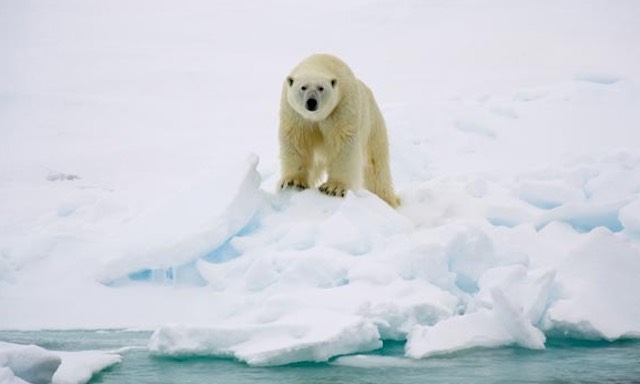
The furry-faced poster animal of the climate crisis is still surviving, even in a world without as much sea ice, according to a new survey.
Along Greenland’s southeast coast, the usual 100-days of frozen sea water is being replaced by a floating landscape of ice coming off the fronts of glaciers, providing the bears with enough ice to hunt on year-round.
It has allowed this genetically-distinct subpopulation to continue to live, despite conditions that were being described 30 years ago as the doomsday situation that would mark the species’ end.
Southeastern Greenland is an extremely difficult place to survey, and for Kristian Laidre, lead author of the study that identified these bears, it was a 7-year process of tracking the illusive population of several hundred as they moved across the landscape. The team did so from stormy-weather helicopters, while needing to rely on survival techniques like burying fuel containers in the snow in the few places the helicopter could land.
They tracked 27 bears’ movements to compare them with 30 years of previous data, while also relying on DNA samples and anecdotal reports from subsistence hunters who would occasionally see them, or come across their carcasses.
LOOK: Orphaned Polar Bear That Loved to Hug Arctic Workers Gets New Life
“They’re an important group because they can help us look into the future,” Laidre told Science Magazine.
The female bears appeared smaller and produced fewer cubs, which could be a sign of adaptation or simply of sparser hunting conditions on their “slushy mélange” of sea ice and glacial runoff.
Hunting from these freshwater ice chunks, it’s the first time polar bears have been seen displaying this behavior, and offers proof that even during under-prevented global warming conditions, bears in parts of the world like Greenland and Svalbard, which contain many glacier fronts, could still adapt to new hunting conditions.
POPULAR: Use This Gorgeous Polar Bear Live Stream to Find Your Zen
These few hundred polar bears are reportedly the most susceptible to climate change of any of the white wanderers, because they live further south. So it’s good news, indeed, that the bears are ‘finding a way’.
Watch the video from Reuters…
SHARE The 30-Year Positive Update on Social Media… (And be sure to sign up below to get a Morning Jolt of Good News in your Inbox Mon-Fri.)
Credit: Source link



